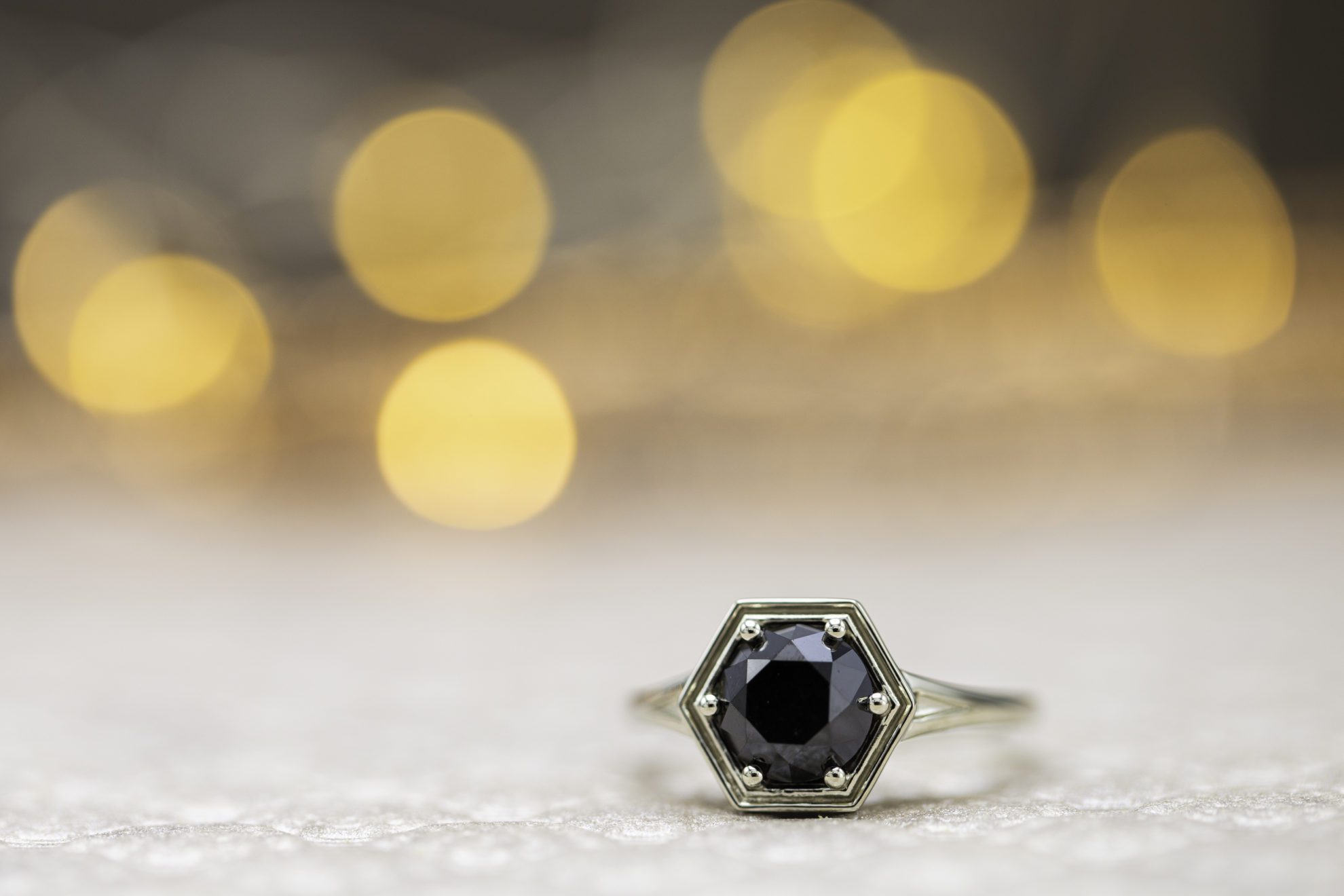What are Black Diamonds and Carbonados?
Most black diamonds used in jewelry are enhanced, but natural black-colored diamonds do exist. Learn more about these as well as unusual carbonado diamonds.
2 Minute Read
Black Diamonds
Black diamonds are considered fancy colored diamonds and are graded differently than the more common white or colorless diamonds. Unlike other fancy colors, such as blues or pinks, black diamonds may cost less than white diamonds, due to a lack of consumer demand. However, tastes do change. In recent years, black diamonds have become increasingly popular. They appeal especially to those looking for something very dramatic and different in an engagement ring or other type of jewelry.
How Do Black Diamonds Get Their Color?
Natural black color in diamonds typically comes from the presence of many small, dark colored inclusions and fractures. Most black diamonds are opaque and have an almost metallic luster. However, some may have a translucent "salt-and-pepper" appearance. Some diamonds with a black face-up color may even have a dark brown or dark green body color, when viewed from the side.
Interested in this topic?
This article is also a part of our Diamond Specialist Certification Course, in the unit Understanding Colored Diamonds.
Most black diamonds used in jewelry get their color though various procedures. These include high pressure/high temperature (HPHT) and radiation treatments.
Whether color treated or natural, however, what defines a diamond is its chemical composition (carbon with minor impurities) and its crystalline atomic structure. That is, the entire diamond can be defined as growing from a cubic or isometric crystal structure.
The 67.5 carat "Black Orlov" is perhaps the most celebrated natural black diamond.
What are Carbonados?
A curious stone often referred to as "black diamond," carbonado is more accurately described as a polycrystalline or aggregate diamond material of amorphous carbon, graphite, and diamond.
This polycrystalline variety of diamond has greater durability than crystalline diamond and is used primarily in industry. However, in February 2022, Sotheby's sold a faceted, 555.55-ct carbonado diamond named "Enigma."
Carbonado resembles charcoal. In fact, its name means "burned" in Portuguese, but what burned it may be truly extraordinary.
An Extraterrestrial Material?
Carbonado might have an extraterrestrial origin, which could account for some of its unusual properties. Unlike crystalline diamonds, carbonados are never found in igneous kimberlite rock formed deep within the Earth. Instead, they occur in alluvial, sedimentary deposits. The micro-diamonds present within carbonado (typically smaller than 20 microns or 20 millionths of a meter) lack traces of minerals found deep in the Earth's mantle, typical of other diamonds. However, they do possess traces of nitrogen, hydrogen, and osbornite (a mineral otherwise found only in meteors). This suggests they originated in outer space.
Carbonado Sources
Carbonados date from 2.6 to 3.8 billion years ago. This might also explain why they only occur in Brazil and the Central African Republic. During that span of the Earth's history, present-day Brazil and the western coast of Africa may have formed a "supercontinent." (This pairing actually preceded the better-known Gondwanaland). It's possible that a diamond meteorite struck the Earth at that location at that time, accounting for carbonado's current distribution.
Diamonds from a Supernova?
In other types of diamonds with meteoric origins, such as lonsdaleite, the physical impact with the Earth may have played a role in its formation and may account for some unusual properties (such as lonsdaleite's purported hexagonal crystal structure).
However, researchers Jozsef Garai and Stephen Haggerty have proposed a different origin theory for carbonados. They argue that carbonados may have been formed in supernovae explosions, which sent chunks of the material into space and ultimately on a collision course with Earth. According to Haggerty, the carbonados arrived on Earth, with their unusual properties, already formed.
International Gem Society
Related Articles
Diamond Value, Price, and Jewelry Information
Whiteflash Review
Grading Lab-Grown Diamonds: An Introduction to the Four Cs
Diamond Buying and the Four Cs, Part 1: Diamond Carat Weight
Latest Articles
800 Years of Mogok: A Celebration in Tenuous Times
What is the Average Gemstone Faceting Yield?
Pyroxmangite Value, Price, and Jewelry Information
How to Identify Emerald Simulants and Synthetics
Never Stop Learning
When you join the IGS community, you get trusted diamond & gemstone information when you need it.
Get Gemology Insights
Get started with the International Gem Society’s free guide to gemstone identification. Join our weekly newsletter & get a free copy of the Gem ID Checklist!
